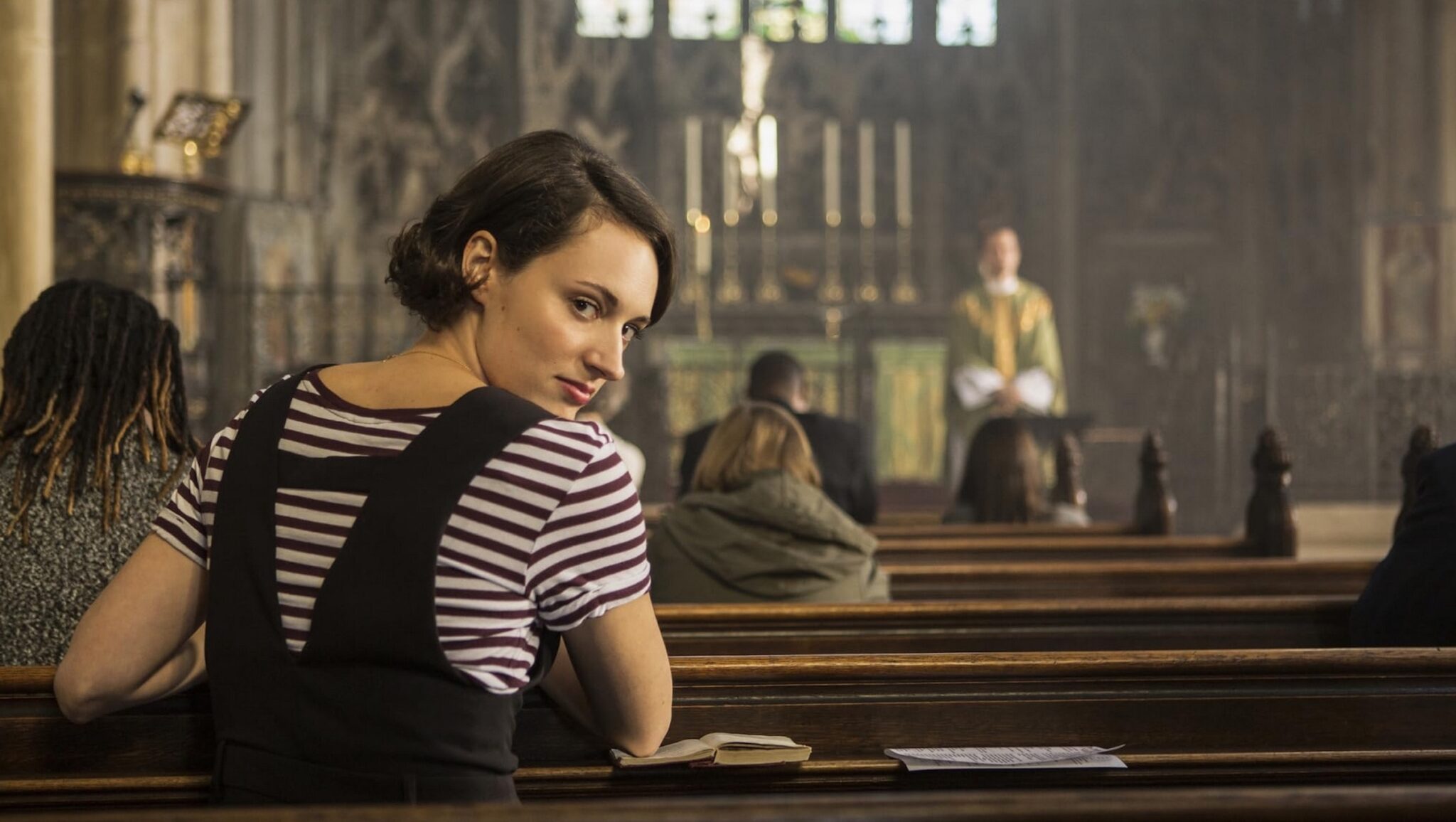How to Write Halloween Movies for the Whole Family

When Halloween season rolls around, audiences are ready to get into the Halloween spirit by watching scary movies. You've got your go-to classics like John Carpenter's Halloween, The Shining, The Exorcist, A Nightmare on Elm Street, Friday the 13th, and an endless array of bloody, gory screamfests.
But what can the family watch together on Halloween? Here's a simple guide for writers who want to break into the massive Halloween screenwriting market with a family-friendly Halloween feature.
Table of Contents
Horror and family films draw big box office numbers
As a screenwriter, horror scripts are one of the most desirable acquisitions for studios, production companies, and distributors. Why? Horror flicks are cheap to produce and often yield major profits. Audiences love to be scared. It's the next best thing to going on a rollercoaster or jumping off of an airplane — all from the safety of your home theater or local cinema.
But Halloween is a family-driven month-long event as well. And within that horror genre lies a very profitable hybrid and genre-blend — family-friendly Halloween movies. Family films are also a huge draw. It's a multi-billion dollar genre. When you pair that with an equally successful multi-billion dollar genre like horror, you have the perfect storm of demographics and profitability.
Look no further than Adam Sandler. He is a pro at family-friendly Halloween-themed movies, with his Hotel Transylvania trilogy grossing $485,523,174 at the domestic box office alone. The franchise is funny. It has great family value messages. And it's full of otherwise creepy monsters and settings. In short, it has something for everyone.
And that is what appeals to producers and execs that buy scripts. Show them the perfect storm of demographics and profits and watch their interest grow.
Streamers love seasonal content
Another dynamic of the family-friendly Halloween movie is that streamers like Netflix, Amazon, and Disney Plus love seasonal features. It's becoming a growing draw for streamers as they take a nod from networks like Lifetime and Hallmark that have mastered the market of holiday season programming.
There will always be demand for seasonal content. And Halloween is right up there with Christmas in popularity.
Adam Sandler has even taken his box office clout to streamers in the recent Netflix Halloween release Hubie Halloween. While it is PG-13, it is still deemed as a family-friendly Halloween, albeit for the slightly older kids of the family.
Streamers are building content libraries. And their viewing algorithms focus on culture trends, current topics, and seasonal programming. If they can get their hands on continual seasonal options covering the most popular holidays, their brand only benefits. The more the merrier — or scarier.
How to find the right balance between family and horror elements
As you can see, the family-friendly Halloween movie is clearly an enticing option for screenwriters to have in their screenwriting arsenal. However, you face some clear hurdles when it comes to blending horror concepts with the family genre. Family films can't:
- Be blood and gore fests
- Have nudity or provocative language
- Showcase realistic death and mayhem
You cancel out that family demographic if you have a lot of those conventional horror elements in your family-intended Halloween script. Normally in genre-blended screenplays, you want to equally balance the genres you are blending. But with family-friendly Halloween scripts, you need to add more weight to the family end of the scale, replacing blood, gore, nudity, provocative language, realistic death, and realistic horror with laughs and family value lessons.
At the same time, you can't forget to inject Halloween imagery. Kids like to be scared too. And with seasonal offerings, you need to inject your script's tone, atmosphere, and settings with creepiness, fun scares, spooky settings, and the Halloween spirit.
How to develop and write family-friendly Halloween movies
1. Identify your target demographics
The best family movies also offer up something for the adults as well. Toy Story, Shrek, and Hotel Transylvania movies all have moments and little jokes for the adults, so don't write simple childish humor that won't appeal to the older demographic. Remember, mom and dad are picking the movies their kids watch. It starts with them. So offer something for the older demographic as well.
Beyond that, you've got three MPAA ratings to shoot for. Knowing the ins and outs of them will help you to craft the right script for the intended audience and production company you market to.
| Rating symbol | Meaning |
|---|---|
|
|
|
|
|
We're obviously staying away from the R and NC-17 ratings here. Those aren't family-friendly. But these three ratings give you some guidance, as far as what you can and can't include. The MPAA offers further guidance. The following breakdowns are taken from the Motion Picture Association of America film rating system:
Violence
The violence in a G-rated film must be cartoonish in nature or minimal in quantity. If the violence is little more than minimal, it requires a PG rating. If the violence is stronger than mild, it requires a PG-13 rating. Rough and persistent violence requires an R rating. And overt, extreme, or exaggerated violence requires an NC-17 rating.
Language
G-rated films usually can have language beyond polite “swears” — heck, rats, dang, darn, shoot, etc. — but rarely, if ever, with profanity.
PG-rated films may have mild profanity — damn and hell — while PG-13 rated films may contain stronger language. Depending on the target audience — rather than a film’s actual age rating — one of the harsher sexually-derived words — an F-bomb — can be used, provided that the word is not used with a sexual meaning.
Drug Use
A reference to drugs, such as marijuana, usually gets a film a PG-13 rating. An example of an otherwise PG film getting a PG-13 for a drug reference would likely be Whale Rider. The film contained only mild profanity but received a PG-13 because of a scene where drug paraphernalia was briefly visible. Critic Roger Ebert criticized the MPAA for the rating and called it “a wild overreaction.” Having more illegal drug use and/or abusing drugs as well as onscreen drug overdose, requires an R or NC-17 rating.
Sexual Content
As of 2010, the MPAA has added a descriptor of “male nudity” to films featuring said content. A brief scene of nudity (non-sexual) will require a PG-rating. More than brief nudity (non-sexual) will require a PG-13 rating. Sexually-oriented (full frontal) nudity will require an R rating. An explicit or violent sex scene, including scenes of rape or sexual assault, will require an NC-17 rating.
Family-friendly movie ratings
With family-friendly Halloween movies, you want to avoid anything that comes even close to the R and NC-17 ratings — for obvious reasons. Shooting for a G rating may be too difficult with the Halloween elements. PG is perfect for the whole family. PG-13 offers parents a decision to make, especially for the younger ones. But it's usually kept light enough for the whole family to enjoy in a comfortable way.
The best option is to do your research and see what family-friendly Halloween movies are rated, and what type of content is — and isn't — within them.
PG
PG-13
2. Make sure you have the key ingredients to a good Halloween movie
Since you're shooting for a seasonal Halloween theme, you need to make sure that you have the right elements of tone, atmosphere, and setting. So, your Halloween script should include:
- A seasonal Halloween setting
- Halloween costumes
- Trick or treating
- Halloween decorations and set design
Any visuals that can set the tone, atmosphere, and setting of Halloween are necessary. When production companies and streamers are considering your scripts for seasonal content, they need to be able to see that your script delivers on all of the familiar elements of the Halloween holiday season. Sure, you can write a family-friendly scary movie without Halloween elements, but including them only gives you added clout to fill their seasonal needs.
Then you need to hit the right story elements of a good Halloween movie. Common plot options include:
- A mystery to solve
- A spooky setting to explore — haunted house, haunted mansion, scary woods, dark caves, etc.
- Monsters, ghosts, ghouls, goblins, etc.
- Overcoming fears
A mixture of those three key elements can be the perfect blend to create a Halloween-worthy narrative. After that, you just need to hit the family film dynamics:
- Funny moments and characters
- Levity to distract younger children away from any scary, creepy, and spooky moments
- Family values taught
- Life lessons that can be learned
Those are all of the key ingredients to a successful family-friendly Halloween movie.
3. Develop a concept that sets your Halloween story apart from others
While there are conventions that you need to follow to write a family-friendly Halloween script, you need to mold them around an original concept and/or character. A Nightmare Before Christmas blended two holidays — Christmas and Halloween — into one (even better) night of mischief and merriment. And it became an instant seasonal classic — for Halloween and Christmas.
Hubie Halloween took the throwback 90's style of Adam Sandler comedies and blended them with Halloween themes.
ParaNorman took the concept of a kid that sees dead people and injected it into a family-friendly narrative, complete with a comedic take on what we saw with M. Night Shyamalan's The Sixth Sense.
Monster House took elements of Goonies and threw those character types into a Haunted House mystery story.
How to write a family-friendly Halloween screenplay
What's your angle? What's your original take? How are you going to write a family-friendly Halloween movie that stands apart from the rest?
To see success as a screenwriter, you have to play the odds. Within your stacked deck of screenplays, you need a few that appeal to the masses and can check those demographic/wants/needs boxes that production companies, studios, networks, and streamers have.
Halloween is one of the most coveted holidays for mass media. It comprises a whole month of programming and marketing. When October hits, audiences are ready to watch some creepy, spooky, and scary movies. And families want in on the mix as well. You could be the screenwriter that offers the next Halloween classic. Hopefully, this guide can help get you started on the next Halloween movie classic.
Ken Miyamoto has worked in the film industry for nearly two decades, most notably as a studio liaison for Sony Studios and then as a script reader and story analyst for Sony Pictures.
He has many studio meetings under his belt as a produced screenwriter, meeting with the likes of Sony, Dreamworks, Universal, Disney, Warner Brothers, as well as many production and management companies. He has had a previous development deal with Lionsgate, as well as multiple writing assignments, including the produced miniseries Blackout, starring Anne Heche, Sean Patrick Flanery, Billy Zane, James Brolin, Haylie Duff, Brian Bloom, Eric La Salle, and Bruce Boxleitner, and the feature thriller Hunter’s Creed starring Duane “Dog the Bounty Hunter” Chapman, Wesley Truman Daniel, Mickey O’Sullivan, John Victor Allen, and James Errico. Follow Ken on Twitter @KenMovies
For all the latest ScreenCraft news and updates, follow us on Twitter, Facebook, and Instagram.
Get Our Screenwriting Newsletter!
Get weekly writing inspiration delivered to your inbox - including industry news, popular articles, and more!



























